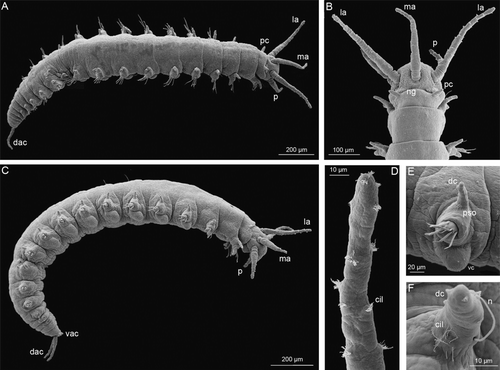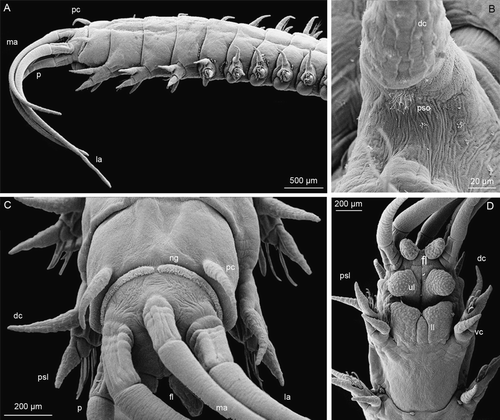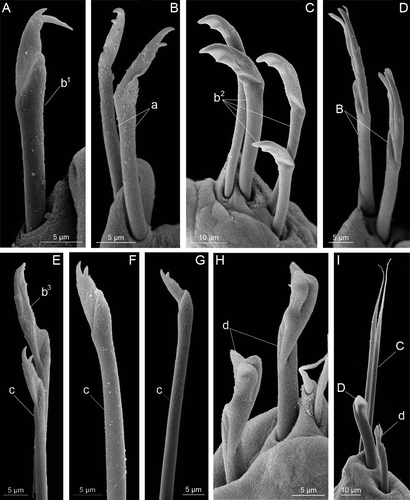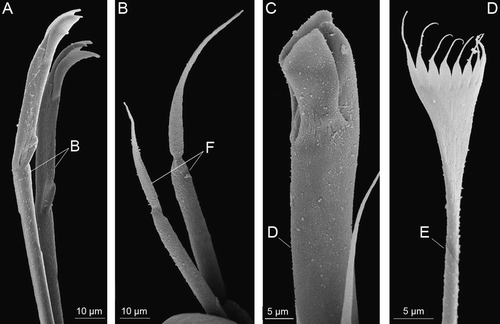Figures & data
Table I. Summary of different developmental patterns in onuphids (pattern types sensu Paxton (Citation1993) with modifications: I – brooding in the parental tube with direct development; II – viviparity; III – brooding in masses or sacs attached to parental tube; IV – free-spawning with planktonic larvae).
Table II. Different types of provisional larval (lowercase) and permanent adult (uppercase) chaetae in comparison with terminology proposed by other authors.
Table III. The distribution of different chaetae during the development of Mooreonuphis stigmatis. Lowercase letters represent provisional larval chaetae (a – anterior pseudocompound bidentate falciger, b
1
– anterior early compound bidentate hooded falciger, b
2
– anterior pseudocompound bidentate hooded falciger, b
3
– anterior compound bidentate hooded falciger, c – transitional compound bidentate falciger, d – posterior compound bidentate subacicular hooded hook, n – notopodial capillary chaeta). Uppercase letters represent permanent adult chaetae (A – acicula, B – anterior pseudocompound tridentate hooded falciger, C – simple limbate chaeta, D – posterior simple subacicular bidentate hooded hook, E – pectinate chaeta). Numbers represent the number of each chaeta on the parapodium of corresponding chaetiger.
Table IV. A comparison of the subacicular hooks (SAH) development among ten species of onuphids.
Table V. A comparison of the development of branchiae among five species of onuphids.




